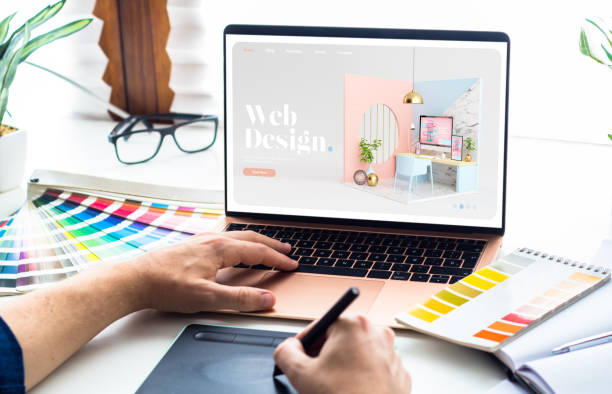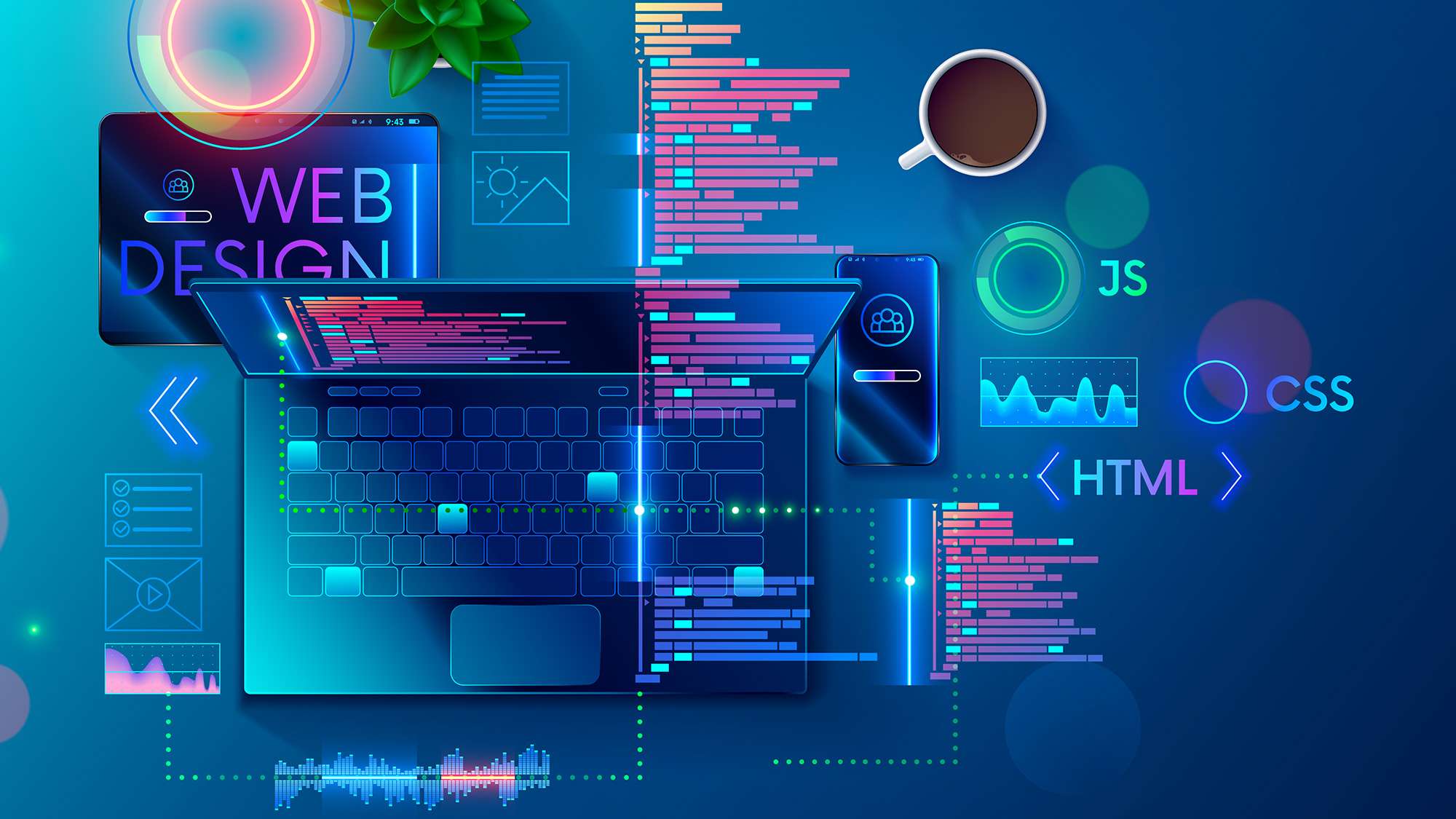Boost Conversion Rates with User-Centric Website Design Techniques
Boost Conversion Rates with User-Centric Website Design Techniques
Blog Article
Maximize Individual Experience With Innovative Site Layout Solutions
In today's electronic landscape, optimizing user experience via cutting-edge web site design options is imperative for businesses seeking to engage their target market successfully. The combination of interactive components can even more boost the individual trip, prompting a reevaluation of traditional style techniques.
Understanding User-Centric Design

To apply user-centric layout efficiently, it is vital to perform comprehensive research, including customer interviews, studies, and usability screening. These research approaches offer important data that notifies style decisions, making certain that the last item aligns with user assumptions. In addition, developing individual personalities can help designers envision and understand with the end-users, assisting the design process toward more appropriate solutions.
Moreover, repetitive style is a crucial part of user-centric methods. By constantly testing and refining designs based on individual comments, developers can identify pain factors and locations of enhancement, causing a more sleek final item. Inevitably, user-centric layout is not merely a stage in the advancement procedure however a continual dedication to prioritizing customer needs, resulting in more reliable and appealing digital experiences.
Importance of Responsive Layouts
As electronic interactions significantly occur throughout a selection of devices, the value of receptive formats can not be overstated. A receptive layout makes sure that an internet site adjusts flawlessly to different display sizes, from desktop screens to smartphones. This adaptability is critical in today's multi-device landscape, where users anticipate a appealing and constant experience despite exactly how they access content.
The main advantage of responsive style is boosted user fulfillment. When a web site is enhanced for all devices, it minimizes the requirement for zooming, scrolling, or straight navigation, which can lead and annoy individuals to greater bounce rates. Furthermore, search engines like Google prioritize mobile-friendly web sites in their ranking formulas, making receptive designs vital for effective SEO approaches.
Additionally, responsive formats facilitate much easier upkeep and updates. Rather of taking care of different variations of a website for various devices, a single, fluid layout can be changed, saving time and resources. This holistic technique not only enhances effectiveness but likewise cultivates brand comprehensibility across systems. Inevitably, purchasing responsive formats is not simply a fad; it is a fundamental concept of contemporary internet style that significantly improves customer experience and engagement.
Enhancing Navigation and Access
Effective navigation and ease of access are critical parts of a well-designed website, dramatically affecting individual interaction and fulfillment. An easy to use navigating structure permits visitors to discover details swiftly and with ease, reducing disappointment and boosting the probability of repeat check outs. Executing clear, descriptive tags for navigating web links, along with a logical hierarchy, can assist customers flawlessly through official statement the website.
Ease of access is equally important, making certain that all customers, no matter their disabilities or capabilities, can connect with the website successfully. This can be attained through the usage of ideal shade contrasts, message dimensions, and alt text for pictures, which with each other boost the experience for visually damaged users. Incorporating key-board navigation and screen visitor compatibility expands accessibility for users with diverse demands.
Normal use screening can supply beneficial understandings right into navigating effectiveness and availability issues. By collecting responses from actual customers, developers can determine discomfort factors and make informed changes. Inevitably, prioritizing navigation and accessibility not only cultivates inclusivity but also cultivates a positive customer experience, enhancing the brand name's dedication to quality and individual treatment in a significantly digital landscape.
Using Aesthetic Power Structure Properly
Visual pecking order offers as a guiding structure in web site style, routing customers' attention to one of the most crucial elements on a page. By purposefully arranging visual elements such as shade, typography, and spacing, designers can create a clear pathway for users to adhere to. This structure not only enhances individual experience but additionally enhances content understanding.
One efficient way to develop visual pecking order is through the usage of dimension and range. Bigger elements naturally bring in even more focus, making headings and key visuals famous. Enhancing this strategy with contrasting shades can additionally set apart main web content from additional information, guaranteeing that crucial information stands out.
Moreover, the setup of components plays an important function in directing individual communication. Employing a grid layout can produce a cohesive flow, while whitespace assists to separate web content and decrease cognitive tons - Website Design. This willful spacing enables users to refine info more conveniently, leading to enhanced involvement
Last but not least, making use of consistent design patterns aids strengthen visual hierarchy, supplying individuals with familiar hints as they navigate the website. By focusing on these concepts, developers can properly make the most of customer experience, guaranteeing that visitors can easily find the information they look for.
Integrating Interactive Components
The unification of interactive elements right into internet site design can significantly boost user interaction and total experience. Interactive features such as sliders, tests, and surveys not only mesmerize customers but additionally promote active participation, making the searching experience a lot more remarkable. By motivating customers to communicate, websites can successfully maintain interest and decrease bounce rates.
Furthermore, incorporating dynamic web content like animations and hover impacts includes an attractive layer of interactivity. These components can guide customers intuitively through the site, highlighting important information and phones call to action. For instance, computer animated buttons can attract interest and boost click-through prices.
Additionally, customization through interactive devices such as chatbots or suggestion engines you could try here allows websites to satisfy individual preferences, cultivating a sense of link. This tailored method not only enhances individual fulfillment however also encourages repeat sees.
Including analytics tools to track interactions supplies beneficial insights into user habits, allowing continual enhancement of the interactive aspects. Ultimately, a well-designed interactive experience changes a passive surfing session right into an engaging journey, bring about boosted customer satisfaction and commitment. my review here Consequently, integrating interactive components is necessary for optimizing individual experience in modern-day website layout.
Verdict

In today's digital landscape, making best use of user experience via innovative site design services is crucial for organizations seeking to involve their audience effectively. Ultimately, focusing on navigating and accessibility not only promotes inclusivity however likewise cultivates a favorable individual experience, reinforcing the brand's dedication to quality and customer care in a significantly electronic landscape.

In final thought, making the most of user experience via cutting-edge site style solutions necessitates a commitment to user-centric principles. Website Design.
Report this page